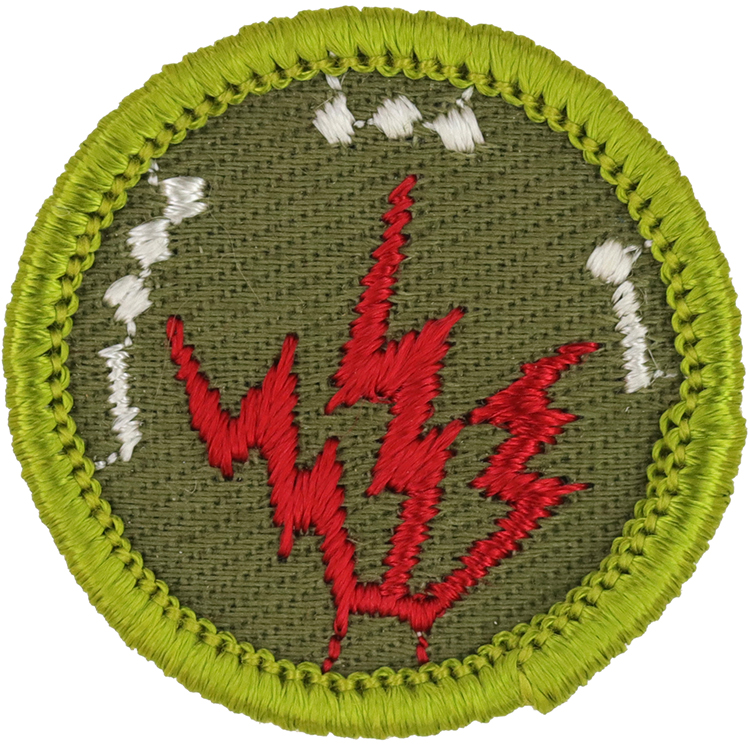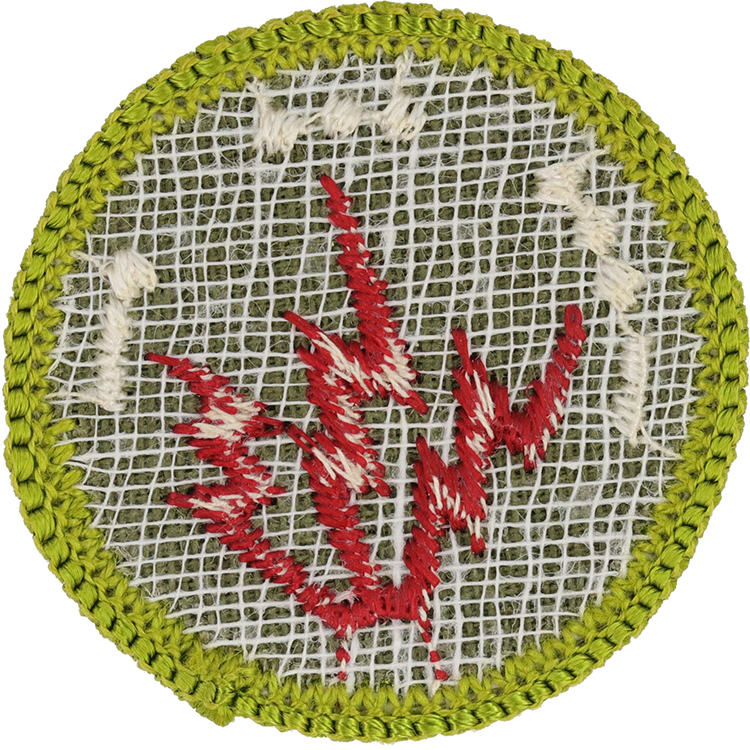
Fig. 1: Radio-F-Front
- Cloth: Green right twill
- Border: Merrowed

Fig. 2: Radio-F-Reverse
- Back: Gauze reinforced starched
Item Name: Radio 1961 - 1968
Item ID: Radio-F
Collector Rating: 1
Requirements January 1960 until September 1962
1. Draw a basic wiring diagram of a one-tube receiving set. Use correct symbols and show all essential parts. Describe purpose of each part.
2. Build a one-tube or one-transistor short-wave receiver and demonstrate its operation by receiving at least five different stations.
3. Explain how to install a receiving antenna and how to ground equipment properly for protection against lightning.
4. Receive and send correctly a straight text of not less than five words (or twenty-five letters) per minute. Text will be assigned by merit badge counselor.
5. Name five of the most frequently used "Q" signals and explain the meaning of each.
6. Tell five basic requirements for a federal license to operate a transmitting station.
-------
NOTE: The holding of a general class amateur operator's license will exempt the Scout from examination on all requirements above, except 1 and 2. Such license must be in force at the time the Radio badge is awarded.
Requirements September 1962 until June 1972
1. Learn the safety precautions necessary in the building, repairing, and testing of radio equipment, and in the erection of transmitting and receiving antennas.
2. Do the following:
(a) Demonstrate correct soldering techniques suitable for the wiring of radio equipment.
(b) Show how to avoid heat damage to transistors and other small parts during soldering.
(c) Explain why rosin-core solder is used rather than acid-core solder in the building of equipment.
3. Do the following:
(a) Draw 10 schematic symbols commonly used in diagrams of radio receivers, radio transmitters, or audio-frequency equipment.
(b) Explain in general terms what each of the parts represented by the schematic symbols does.
4. Using the knowledge gained from the first three questions, build from individually purchased parts or from a kit at least one piece of radio equipment using a vacuum tube, transistor, or diode (including selenium, germanium, or silicon rectifiers). Demonstrate the equipment for the counselor to show that it works correctly and to show that the wiring is safe, correctly soldered, and reasonably neat. (Acceptable equipment includes a portable radio, shortwave receiver, amateur transmitter, hi-fi amplifier, a.c.-d.c. multimeter, vacuum-tube voltmeter, FM tuner, shortwave converter, tube or transistor code-practice set, and similar apparatus. Because they are usually too simple, crystal radios, buzzer-type code sets, and continuity testers would not be considered acceptable.)
5. Demonstrate your ability to send and receive Morse code by ear for at least 1 minute at a rate of at least five words (25 letters) per minute without any errors. (Holders of unexpired amateur licenses of any class, issued by the Federal Communications Commission, are exempt from this requirement.)
6. Do the following:
(a) Name and explain five of the common "Q" signals and five common abbreviations used by radio operators.
(b) Explain how amateur radio operators prepare to handle emergency messages during floods, hurricanes, forest fires, blizzards, or similar disasters.
7. Investigate job opportunities in radio. Discuss these with your counselor. Tell what job, if any, would interest you and what training is advisable in preparing for it.



